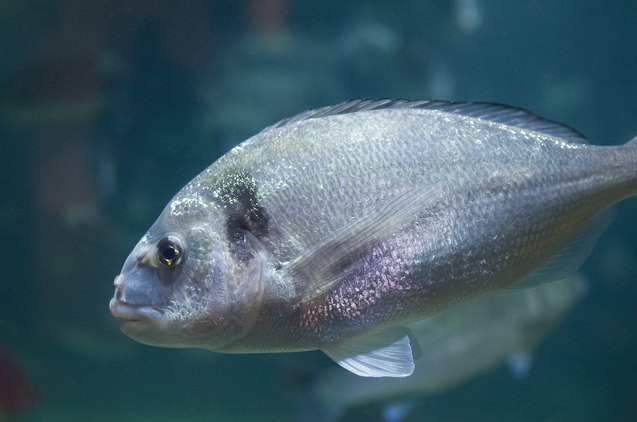Sea Bream


About Sea Bream
Also sometimes referred to simply as breams, sea bream are a group of saltwater fish belonging to the Sparidae family. This family includes about 155 species in 38 different genera. These fish are found in shallow areas of tropical and temperate waters where they tend to inhabit the lower levels of the water column. Different species exhibit different temperaments but many breams are peaceful fish. Some of the larger species may be a little more territorial and semi-aggressive but problems can generally be prevented by providing adequate space.
Also sometimes referred to simply as breams, sea breams are a group of saltwater fish belonging to the Sparidae family.
Though different species come from different areas, most sea breams are found in tropical to temperate marine waters in most of the world’s major oceans.
Breams are not some of the most colorful marine fish, probably because they do not tend to inhabit reefs. These fish may exhibit stripes or bars of dark color on their bodies but the overall coloration tends to be fairly dull, usually silver or gray. Some species do exhibit brighter coloration, however, like the Two-Line Monocle Bream which is bright yellow.
Breams tend to inhabit the lower levels of the water where the temperature is a bit cooler. Seabreams require saltwater habitats and they are not reef fish, though they do appreciate decoration of the tank with some live rock and sandy substrate. The ideal pH range for most breams is a little on the alkaline side, between 8.1 and 8.4 on the pH scale with a hardness level between 8 and 12 dKH.
For the most part, breams are carnivorous fish, feeding primarily on worms, crustaceans and small fish in their native habitat.
For the most part, breams are carnivorous fish, feeding primarily on worms, crustaceans and small fish in their native habitat. In captivity, breams may accept a variety of fresh and frozen foods – they may also accept carnivore pellets or granules.
Also read: Tips and Tricks for Stocking a Community Tank
Most sea breams spawn their eggs over sandy substrate and they generally do not exhibit much parental care. Some species of seabream have been identified as hermaphrodites which means that females can turn into functional males when a dominant male is not present.
There are more than 150 different species of sea breams, but not all of them are popular in the aquarium hobby. Some of the species you are most likely to see available in the aquarium trade include the following:
- Two-Line Monocle Bream (Scolopsis bilineatus)
- Sheepshead Bream (Archosargus probatocephalus)
- Black Seabream (Spondyliosoma cantharus)
- Red-banded Seabream (Pagrus auriga)
- Common Two-Banded Seabream (Diplodus vulgaris)
Photo credit: Rich Carey/Bigstock; tigidal/Bigstock

Kate Barrington is the loving owner of two cats (Bagel and Munchkin) and a noisy herd of guinea pigs. Having grown up with golden retrievers, Kate has a great deal of experience with dogs but labels herself a lover of all pets. Having received a Bachelor's degree in English, Kate has combined her love for pets and her passion for writing to create her own freelance writing business, specializing in the pet niche.
More by Kate Barrington
























